This article was medically reviewed by Luba Lee, FNP-BC, MS. Luba Lee, FNP-BC is a Board-Certified Family Nurse Practitioner (FNP) and educator in Tennessee with over a decade of clinical experience. Luba has certifications in Pediatric Advanced Life Support (PALS), Emergency Medicine, Advanced Cardiac Life Support (ACLS), Team Building, and Critical Care Nursing. She received her Master of Science in Nursing (MSN) from the University of Tennessee in 2006.
There are 20 references cited in this article, which can be found at the bottom of the page.
This article has been viewed 31,502 times.
Becoming certified in cardiopulmonary resuscitation (CPR) is very beneficial. CPR saves lives and is easy to learn, and is easy to be certified in. Countries that have dedicated heart and health associations (such as the American Heart Association (AHA) and Red Cross) host many different types of seminars and classes for your convenience. This skill may be essential in certain careers, such as childcare, healthcare, and occupational therapy and it is a helpful skill to have.
Steps
Gathering Information About CPR Certification
-
1Identify reasons to get certified. There are many reasons to get certified in CPR. Some of the most important ones include:
- You can save lives - it teaches you to be aware of your surroundings and recognize signs of cardiac arrest and other debilitating situations.
- You are better equipped to assist others in need. Studies have shown that CPR certified individuals are more likely to lend a hand in time of need.[1]
- It looks good on a resume. CPR certification can be handy in a number of jobs such as childcare, education, food services, sports coaching, and elder care.
- It gives you peace of mind knowing you are prepared to help others in need.
-
2Prepare questions to ask certification providers. There are a few frequently asked questions you should ask your certification organization to make sure you are getting the most out of the course.[2] These questions include:
- Do I receive a CPR card after completing this class? This demonstrates that you have finished a certified course.
- Do I get hands-on-training in this class? While you can complete this certification online, it might be best to practice these skills in a classroom.
- Is my instructor certified to teach CPR certification? You want to make sure your instructor is legally able to teach the class!
Advertisement -
3Meet age requirements. Almost everyone is eligible to take a CPR class. If you are able to pay the course fee and able to perform the duties necessary, you can become certified to save lives.
- It is suggested that cards can be provided to children as young as 10 years old.
Learning the CAB (Compression, Airway, Breathing) acronym
-
1Learn to do compressions. This is designed to restore blood flow. In a CPR course, your trainer will teach you to properly do chest compressions on adults and infants. You will learn:
- Put the victim on his back.[3]
- Kneel at the victim’s side.
- Put the heel of your hand in the proper position on the victim’s chest (between the nipples). Stack you hands on top of one another. Keep your elbows straight and your shoulders squared and directly above your hands.
- Use your upper body weight and press straight down. Push hard at about 100 compressions per minute.
-
2Understand how to clear an airway. After chest compressions, you should learn how to clear a person’s airway. Generally, you do this by the head-tilt, chin-lift maneuver. To do this:[4]
- Gently lift the victim’s forehead with your palm. Then, gently tilt the head back.
- With your other hand, tilt the chin forward.
- Check for normal breathing and look for chest motion.
- Begin mouth-to-mouth breathing if the victim is gasping or not breathing normally.
-
3Focus on breathing. In your CPR course, you will learn how to properly give mouth-to-mouth breathing. To do this:
- After the victim’s airway is clear (using the head-tilt, chin-lift maneuver), pinch his nostrils closed.
- Cover the victim’s mouth with your own to create a seal.
- Prepare to give two rescue breaths. Give a one-second breath and watch to see if the chest rises. If it does, give the second breath.
- If the chest doesn’t rise, repeat the airway clearing maneuver (head-tilt and chin lift) and try again.
- After giving rescue breaths, give thirty chest compressions.
- Continue CPR movements until there are signs of movement or medical personnel arrive.
-
4Put people in recovery position. A recovery position is designed to keep the victim’s airway open.[5] This will also ensure that the victim will not choke from fluids or vomit. In a CPR class, you will learn to:
- Get down on the ground near the victim.
- Place the victim’s arm, the one nearest to you, at a right angle toward his head.
- Tuck the victim’s other arm up toward his head so that the back of his hand is touching his cheek.
- Bend his knee, the one furthest from you, in a right angle.
- Carefully roll him on his side by pulling his bent knee. At this point, his arm should be cushioning his head.
- Tilt his head back slightly; this will ensure his airway is open.
- Stay with the person and monitor his condition.
Passing a Certification Course
-
1Expect the course to take a few hours. In general, a basic CPR course takes around three hours to complete. These courses might run longer or shorter depending on the audience of the class.[6]
- For example, if you are just renewing your CPR certification, it might take less time than a classroom full of new students.
-
2Prepare to take a written exam, in some cases. Some certifications, such as the AHA’s BLS course, has a 25 question test that you must get a 84% or higher on to pass.[7]
- These questions cover the material covered in your class including how to respond in emergency situations. You can take a pretest on the AHA’s website that might help you prepare.[8]
-
3Prepare to take a skills check.[9] , You will be required to demonstrate that you are able to perform CPR and other lifesaving duties. This may include:
- Checking patient for response.
- Activating emergency response signal.
- Opening airway using chin-tilt method.
- Checking breathing.
- Checking carotid pulse.
- Locating CPR hand position.
- Delivering appropriate CPR compressions.
-
4Remember to recertify. Certifications generally last around two years. You will need to retake the course to renew.
- Expiration dates appear at the bottom of your CPR certification card.
Finding Certified Programs
-
1Identify accredited programs. You want to make sure that you will be receiving a certification from an accredited source.[10] It is always best to go through a known organization (example: AHA, Red Cross) that specializes in health and safety.[11]
- Their websites have detailed information about their programs and certificates.
- Some online programs may try and sell certificates that are not associated with national institutions. Do not pay for programs that promise certifications with no skill checks, or does not provide certificates through the mail.[12]
- Sometimes, online programs will promise an instant electronic course card upon completion of a course. Most often, these are fraudulent and should be avoided.
-
2Avoid scams. A legitimate company will never try and sell you a product. National organizations warn users about scams that try and sell insurance or other products.[13] Avoid and be wary of anyone who asks you to:
- Provide financial or personal information such as personal identification numbers, social security numbers, or passwords
- Buy insurance on behalf of the AHA or other national organizations
- Purchase exam answers for certification programs
-
3Pay the fee. To become certified, you must pay the fee to take the course. The prices vary. A basic CPR course is about $30.[14]
Enrolling in a CPR Course
-
1Pick a class type. There are, generally, three types of class types you can choose from when going for a certificate: in-person, blended, online. Each has its benefits and shortcomings.
- In-person classrooms offer personalized instruction. Instructors are able to monitor if a student has questions or problems.[15] You can more easily practice the needed skills in an actual classroom. However, the downside is that you have to travel to a location.
- Blended-classes offer flexibility of online classes. It also provides hands-on training. These classes are often not asynchronous and are scheduled at specific times, which may limit accessibility.[16]
- Online classes are great for flexibility. You can take them at any time and at your own pace. However, they often lack personalized and hands-on training.[17]
-
2Enroll in an General CPR & AED (automated external defibrillator) course.[18] This course is designed for general CPR certification including:
- Techniques for rescue breathing and chest compression.
- Infant, child, and pediatric CPR.
- CPR with an ambulance bag.
- AED use.
- Choking response.
-
3Consider a Basic Life Support (BLS) Certification. This is more in depth course taught by certified instructors.[19] It is designed for healthcare professionals and caregivers. It includes training on:
- First aid techniques.
- Chest compression and rescue breathing.
- Basic life support for shock, drowning, and drug overdose.
- AED use.
- Dealing with stroke victims.
- Bloodborne pathogen training.
-
4Get certified in basic first aid. This is a general class for anyone wanting to learn basic first aid and CPR.[20] It includes how to respond to:
- Minor/major bleeding.
- Burns.
- Unconscious victims.
- Fainting/heat stroke victims.
- Bites and stings.
- Allergic reactions.
- Choking.
Warning
- CPR class names are not standardized. The ones listed here are directly from the AHA. Read the description of each course to make sure you are obtaining a certification in the skills you require/desire.
References
- ↑ https://pubmed.ncbi.nlm.nih.gov/21354688/
- ↑ http://news.hsi.com/onlineonlycpr
- ↑ https://www.redcross.org/take-a-class/cpr/performing-cpr/hands-only-cpr
- ↑ https://www.redcross.org.uk/first-aid/learn-first-aid/unresponsive-and-not-breathing
- ↑ http://www.nhs.uk/Conditions/Accidents-and-first-aid/Pages/The-recovery-position.aspx
- ↑ https://cpr.heart.org/en/courses/basic-life-support-course-options
- ↑ http://www.hlfirstaid.com/MilwaukeeCPRclassesFAQs#blspassingscore
- ↑ http://miningquiz.com/quiz/basic_life_support/bls_annotatedsampletest.pdf
- ↑ http://ahainstructornetwork.americanheart.org/idc/groups/ahaecc-public/@wcm/@ecc/documents/downloadable/ucm_426397.pdf
- ↑ http://www.redcross.org/take-a-class/certificates-ceus
- ↑ http://www.procpr.org/en/articles/cpr-certification-power
- ↑ http://www.cprcpr.com/home/bay-area-cpr-fraud-alert/
- ↑ http://www.heart.org/HEARTORG/General/Fraud-Warning_UCM_451200_Article.jsp#.VsNrJvIrKUk
- ↑ http://cpr.heart.org/AHAECC/CPRAndECC/FindACourse/Courses/UCM_473164_Courses.jsp
- ↑ https://www.asme.org/career-education/articles/certification/e-training-vs-in-person-training
- ↑ https://blended.online.ucf.edu/about/benefits-of-blended-learning/
- ↑ http://oedb.org/ilibrarian/10-advantages-to-taking-online-classes/
- ↑ https://www.cprcertified.com/courses/adult-cpr
- ↑ https://www.cprcertified.com/courses/bls-certification
- ↑ https://www.nationalcprfoundation.com/courses/standard-cpr-aed-first-aid/
About This Article
To become CPR certified, register for a general CPR course by searching online for courses in your local area. Alternatively, you could register for a basic first aid course. Before you register, ensure the program is accredited by an organization like the Red Cross. Additionally, you'll need to pay a fee to take the course. Then, when you attend the course, expect it to take 2 hours, after which you'll receive your certification. For tips on how to perform chest compressions and put someone in the recovery position, read on!
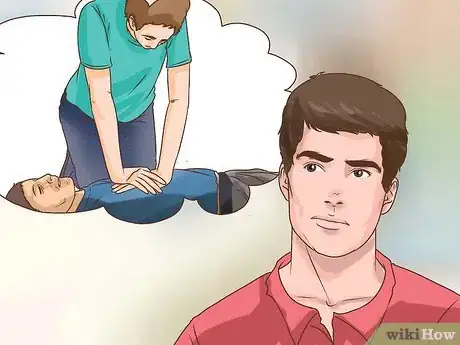
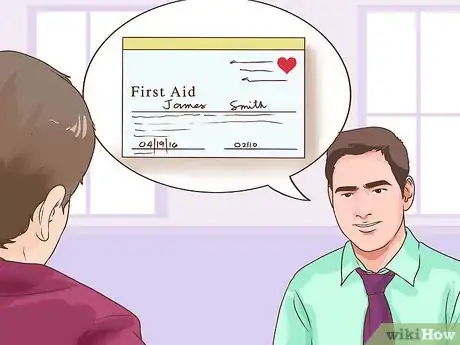
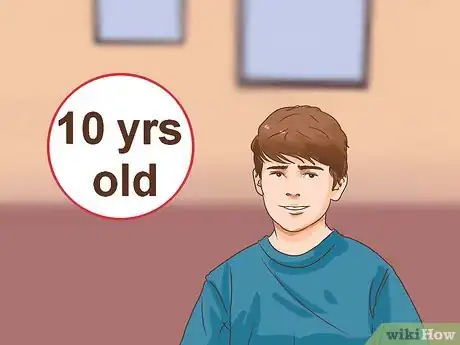
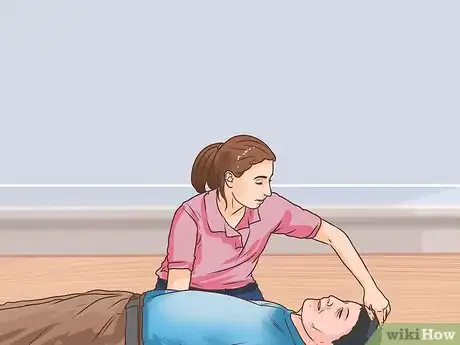

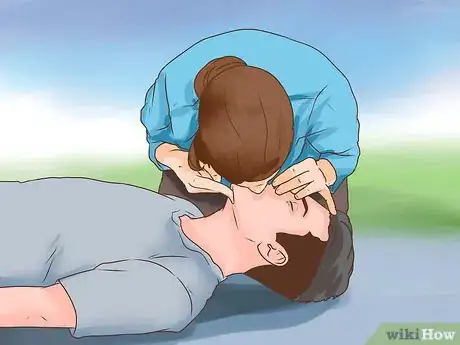
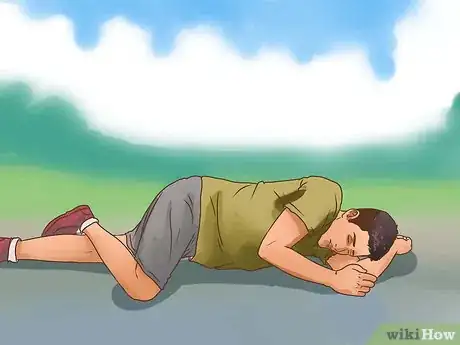
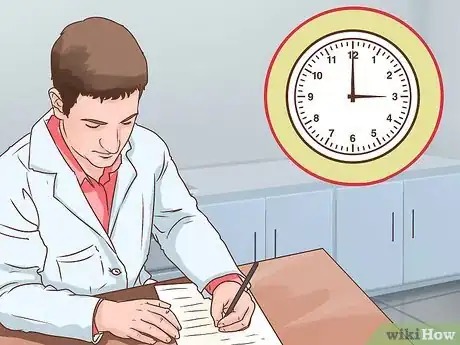

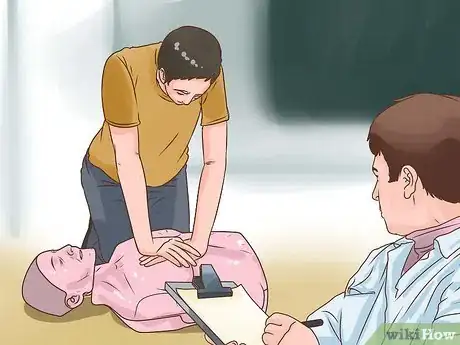

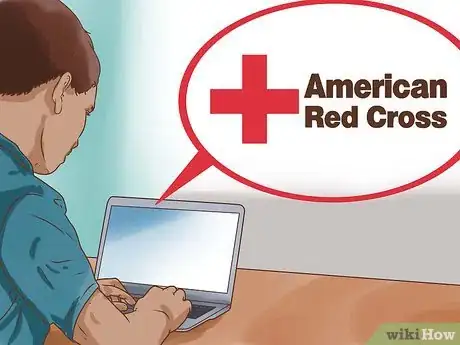
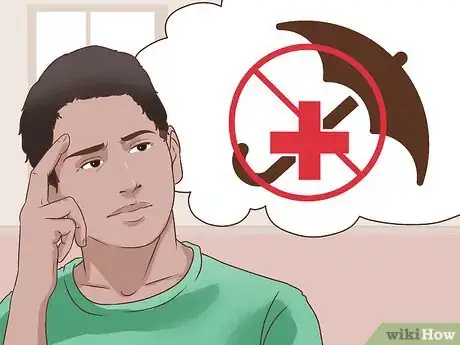
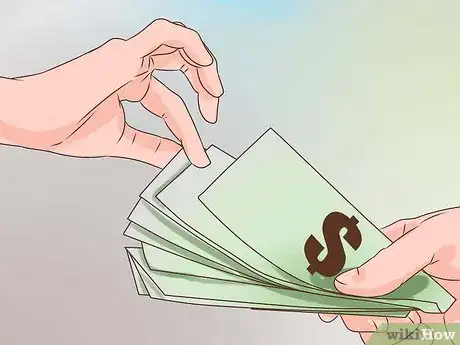
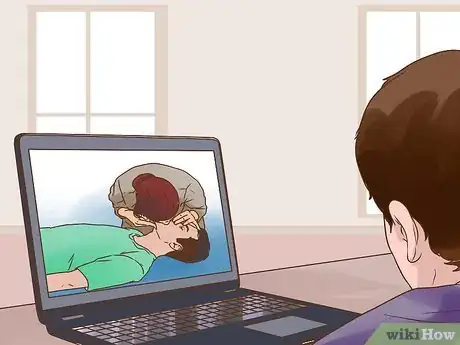
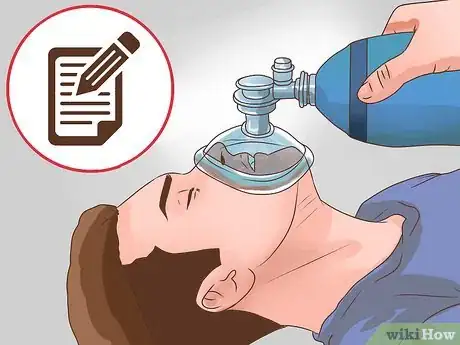

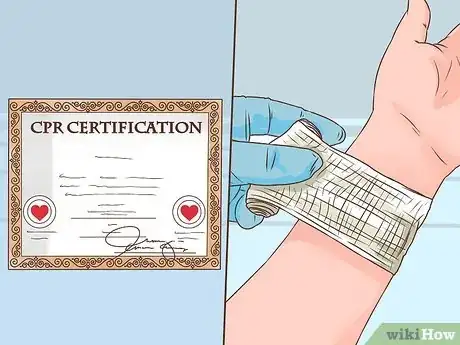


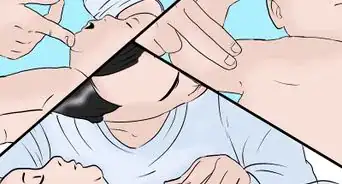

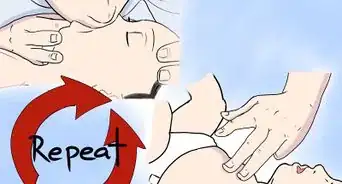
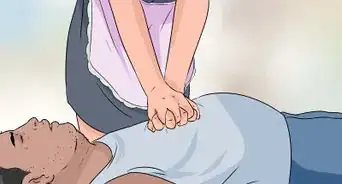

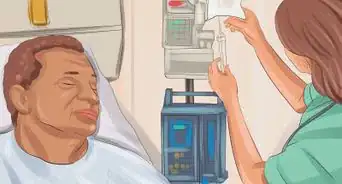

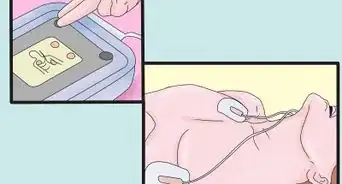
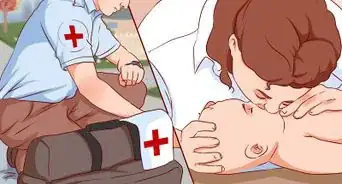
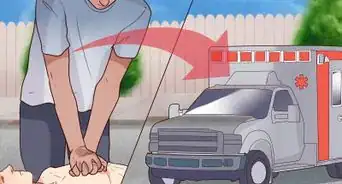








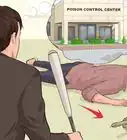
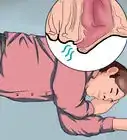
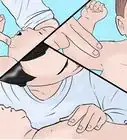




































Medical Disclaimer
The content of this article is not intended to be a substitute for professional medical advice, examination, diagnosis, or treatment. You should always contact your doctor or other qualified healthcare professional before starting, changing, or stopping any kind of health treatment.
Read More...